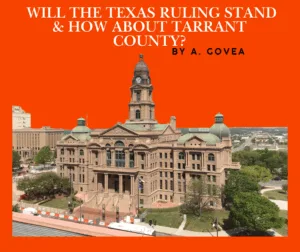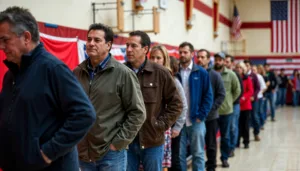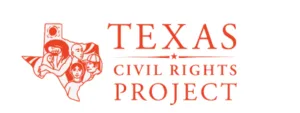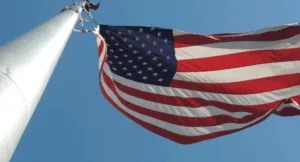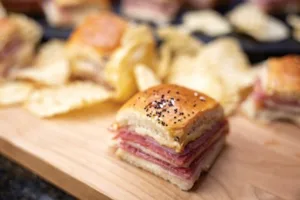It was 5 am and we were meeting the regatta to make our 90-mile journey in the predawn darkness. We were just outside the Stock Island channel and I was looking for the big catamarans because most of the people in our group had chartered catamaran yachts in Key West to make the journey across.
COPYRIGHT ARRAZOLO LAW, P.C.

It was not a bad deal, $2,000.00 a head for six days and seven nights. I was out here for the adventure, so paying someone to take me across was of no interest. I found the string of yachts and fell in a quarter mile behind the last yacht.
We were running at a steady 9-10 knots. I kept track of my flowscans to be sure that we were burning no more than one gallon per mile. After about 40 miles, I noticed that we were losing speed steadily. I also noticed our fuel consumption steadily going up.
“I think there’s something wrong,” said Don. He had joined us in Key West as planned and now we were getting him warmed up at the helm.
“Must be the gulf stream,” I said. I had always heard of its power. But here it was firsthand. We were traveling with the engine RPMs at 1800 and our speed had gone down from 9-10 knots to 4.5 to 5. “Kick up the RPM’s, “I told him. He kept increasing the RPMs until we were back at 9-10 knots.
“We are burning 1.3 gallons per mile,” said Don. “Is that ok?”
“We have no choice. We have to stay with the group. We have to clear customs together,” I told him.
“Ay Cap,” he said. I had brought 300 gallons of diesel so I had to keep close track. I didn’t not want to fuel up in Havana. As we pushed on we kept gaining on a boat that was getting passed by the formation. The Captain announced that his boat would not go over 5 knots in the gulf stream and he would join us later. We soon passed him up. It was a $500,000.00 Grand Banks trawler. The boat was known for excellent fuel economy and blue water capability. However, that was one thing I really loved about my Quid Pro Quo, it was that ability to cruise at a mile per gallon at 8-10 knots or at 22 knots at two gallons per mile.
At 20 miles to Havana the GPS screen suddenly went blank. We lost all data; GPS position, speed, location and distance. I almost went into panic mode. I checked all the connections and everything seems ok. Don checked all the connections too. Then I realized that I had made a rookie error. Despite all my preparations, I had never checked the GPS to see if we picked up data in Havana. I had no paper charts and I knew nothing about the topography of the ocean surrounding the port of Havana. I didn’t know if it was shallow and dangerous like the Florida Keys or a deep harbor like Galveston. For a second I thought about turning back. The last thing I needed was to damage my boat. However, I knew that as long as I followed in tight and had plenty of daylight we would be safe.
We pulled into Marina Hemingway at 5:20 pm. The Marina was arranged so that you stopped at a Cuban customs office dock when you first entered the marina. The Captain of the customs office was a very nice and professional man. He asked if we wanted our passports stamped. Usually US citizens don’t want the Cuban stamp because the boats go to Cuba without proper permits. However, we did want our stamps because we were doing everything above board. They put a small cocker spaniel into our boat named, “Cachorrito.” He sniffed around and once they were satisfied they gave us our dock assignment. I offered the Captain a “tip” but he declined. I had been told to offer a $20.00 but he said no thanks and waved it off.
We were in Havana.
The tour guides started spreading leaflets and brochures for the activities for the trip. I gathered up my crew and we left the marina to catch a cab to the city.
I had several goals for my trip to Cuba. It was my first trip to a Communist country. After reading Marx’s Manifesto I was curious to see what the rank and file Cubano thought about life in Cuba. The problem was getting the trust to have real conversations with our hosts. The last thing I needed was to be accused of being a spy or trying to incite political unrest. I had to tread lightly.
The second goal was to follow Hemingway’s footsteps. He loved Havana but lived there in the fast and crazy mob riddled Cuba right before Castro started the Revolution. After the Revolution, Hemingway, along with most Cubano land owners, had his hacienda nationalized by the Cuban government. I wanted to see the bronze Hemingway statute at the bar in La Floridita restaurant in Havana. I also wanted to see Hemingway’s Hacienda.
The story circulated amongst the TMCA members that I was taking off to Havana and soon we had four taxi loads of fellow boaters that wanted to join. I realized I was probably the only Spanish speaker in our group. Taxis were 20 dollars each when you got one in the marina, but only 10 dollars each if we left the marina. Stepping out of the Marina was like stepping back 60 years in time. Our cabi quickly gathered three other 1950’s model cars and we started our trek.
“Amigo, queiro un lugar barato para comer. Un lugar donde coman los Cubanos. Y que sirvan tacos,” I told him.
“Tacos,” he asked?
I was incredulous. “No sabes lo que es un taco?” I asked
“No, que es eso?”
“Bueno, llevanos a un lugar barato y autentico. No quiero un lugar turistico con platillos de 20 a 25 kuks,”
“Esta bien,” he said. He kept shifting the transmission of his 1947 Hudson on the tree. When he shifted from third gear, to fourth, to fifth I asked him.
“Que transmission traes?” I asked. I knew that the original Hudson only had a three speed transmission.
“Toyota,” he said.
“And engine?”
“Russian diesel,” he said. I thought I had picked up the diesel from the fumes. It appeared that things were not as they appeared in Cuba. It was funny seeing grown men morph into children and their wives into their moms. Seeing all the antique cars had all the men in the group giddy with glee and pointing from one to the other like children at a toy store. We zig zagged through Havana and parked in front of an abandoned 10 story building.
We gathered the group and my cabi led us into a side entrance. The entire first floor of the building was gutted out. We went up three flights of stairs and double doors led into a nice, fancy restaurant, complete with dancers and nice menus. I looked at the menu and all the items were from 20 to 35 kuks. This was exacerbated by the fact that the exchange rate for kuks was 87 kuks to each 100 dollars.
“Vamos,” I said. We all took off and I led the group towards La Floridita. The cabi was not happy that he was losing out on some big tip the restaurant probably gave him for bringing in tourists but I didn’t really care. Along our walk we were approached be several young men offering to sell us cigars. I did want cigars, but everything in due course.
Once in La Floridita we ordered Cubano sandwiches and Cubalibre drinks. They had live entertainment. La Floridita was government owned. I was hoping for a small Cuban owned place but maybe that was going to be a tall order given the lack of free enterprise. Several members of the group came by our table to thank me for being the tour guide. I loved boaters, you had to be a bit crazy to come out here on a boat. Two of my friends, Dan and Jill, had also come here on their own 65 foot yacht via the intercoastal waterway. They were heavy drinkers and partiers and often competed only against each other to see who was the most loud and obnoxious.
When it was time to leave, I asked our waiter for a good cigar shop to find authentic Cohibas. He directed me a couple doors down to the government owned “Havana Club.” I walked up the flight of stairs and met Gustavo who managed the place. He went through the various cigars in the glass cases and walked me through the humidor. It was very impressive, particularly the prices. A single Cohiba was 23 Kuks. Too much.
The group dispersed and my crew and I walked to “El Morro.” A fort that overlooked the Havana Harbor. We walked along the “Malecon.” I had left my gold Rolex stashed in the boat. There was a police officer stationed at almost every other corner. Young men or women. They did not carry guns. They only had a two-way radio. I had heard that crime was almost non-existent in Cuba. I could see why. It seemed like the police’s job was to be the eyes and ears. I think that if you got reported they came and got you in the middle of the night.
There were couples embracing and people fishing right off the Malecon. From the dark blue color of the water it looked like it dropped off to 100 feet almost immediately. I didn’t think there would be any beaches in the vicinity with this topography. The sun was going down over the horizon and the warning was to stay out of Havana at night. The story was that the police officers left their posts and the place was not as friendly. We hailed a 57 Bel Air and headed back to the marina.
I saw a place with local people lined up outside. “Que es ahi, Amigo,” I asked our cabi.
“Una tienda de comida. Pero no tienen mucho surtido,” he said.
“Se paga ahi con kuks o con pesos Cubanos,”
He looked at me for a second. “Pesos,” he said. It confirmed what I already thought. Cuba had two currencies. The kuks was for the tourists. The pesos were only for Cubanos. We arrived at the Marina as the sun was setting.
“Ill make us some beef tacos,” said Roberto with half a smile on his face.
“Ill help you,” said Don. “Pinche Cuba,” he smiled.
We ate tacos, drank Bucanero beer and played Dominos on my Cuban domino table.We were in Havana!

